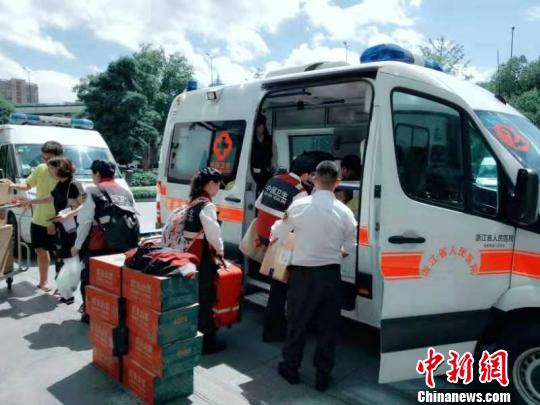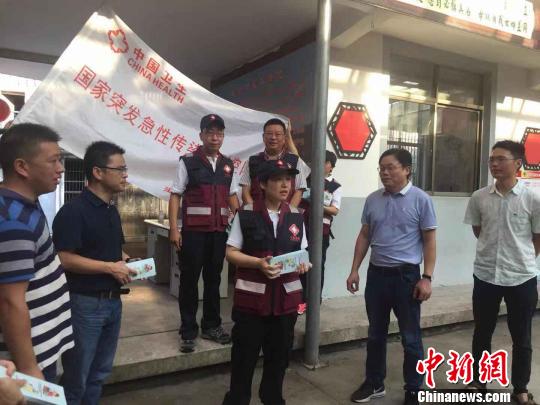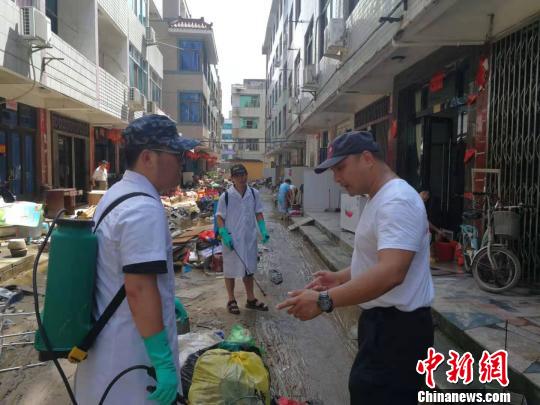
Hangzhou, August 12 (Xinhua) Typhoon Likima has left Zhejiang. In order to ensure that there is no abnormal epidemic situation after the disaster, the epidemic prevention in Zhejiang has entered a "decisive battle" moment. At present, the province has appointed the National Emergency Medical Rescue Team in Zhejiang Province and the National Sudden Acute Infectious Disease Prevention and Control Team in Zhejiang Province to form 6 teams, and appointed 8 cities to form 15 emergency teams to help 15 disaster-stricken counties (cities, districts) to carry out epidemic prevention and disinfection work.

The reporter learned from the Zhejiang Provincial Health and Wellness Committee that secondary disasters such as floods caused by typhoons have brought damage and impact on environmental sanitation, and caused different degrees of pollution to drinking water. In addition, the current temperature is still high, and it is also in the high incidence period of intestinal infectious diseases. Mosquitoes and flies are easy to breed and spread after floods. At present, the situation of prevention and control of infectious diseases in Zhejiang Province is grim.

"Where the flood retreats, the epidemic prevention and disease prevention work will follow up, and the sanitation will follow up." Zhang Ping, secretary and director of the Party Committee of Zhejiang Provincial Health and Wellness Committee, said that the fundamental purpose of disinfection work is to control the source of infection. At present, the key disinfection areas are water sources, crowded places and heavily polluted places.

On the 11th, an emergency team arrived in Yongjia County, Wenzhou, to carry out large-scale centralized disinfection of sanitary dead corners that are easy to breed vectors, and to guide the sanitary and epidemic prevention of resettlement sites and the sanitary monitoring of drinking water in wading water supply units. At the same time, the emergency team emphasized to the victims the health protection points such as "washing hands frequently, drinking boiled water and eating cooked food", "swatting flies, killing mosquitoes and killing mice".

After the typhoon ravaged, the waterlogging in the ancient city of Linhai in Taizhou was serious. On the 11th, the Zhejiang Provincial Health and Wellness Committee appointed the National Emergency Medical Rescue Team in Zhejiang to form a health emergency detachment to rush to Taizhou in two batches, and started six special trucks for the National Emergency Medical Rescue Team, which were equipped with mobile X-ray equipment, ultrasonic machines, inspection equipment and a large number of first-aid drugs. It is understood that all the equipment of the six vehicles is equivalent to a small mobile hospital, and it can run continuously for 10 hours without replenishment.

Cai Wenwei, deputy captain of the rescue team and director of the emergency medicine department of Zhejiang Provincial People’s Hospital, said that according to past experience, skin diseases, gastrointestinal diseases, surgical trauma, etc. are most likely to occur after floods, and the rescue team has prepared sufficient equipment and medicines to ensure the smooth development of this rescue. "Where we are needed, we will go, and where the disaster is serious, we will go."
After the flash floods broke out in Lin ‘an, the emergency team of Hangzhou CDC rushed to Lin ‘an, distributed bleaching powder, bleaching essence tablets and effervescent tablets to the disaster areas for disinfection of drinking water and environment, hung banners, and distributed posters and leaflets for preventing intestinal infectious diseases to the masses.
In Jingling Town, Xinchang, Zhejiang Province, which suffered the most, the emergency team met with the local health bureau and the CDC and learned that 17 villages in the town were flooded and 11 villages were polluted. According to the interviews and on-site visits, the national emergency team focused on on-site guidance on polluted water sources, environmental cleaning, sanitation and disinfection, and proposed to carry out water quality monitoring on source water, pipe network water and peripheral water as soon as possible, and handle problems in time when found.
As of 19: 00 on the 11th, the health and health system of Zhejiang Province had dispatched 1,526 health and epidemic prevention teams and 7,171 person-times. The area of epidemic prevention and disinfection was 10.18 million square meters, and 27,191 kilograms of bleaching powder, 10,882 kilograms of bleaching tablets, 17,452 kilograms of effervescent tablets, 2,641 kilograms of chlorine-containing disinfectant, 2,040 kilograms of pesticides and 1,607 kilograms of other disinfection drugs were consumed.
Xia Shichang, deputy director of the Zhejiang Provincial Health and Wellness Committee, said that in the next step, the province requires all localities to continue to strengthen epidemic monitoring, and if necessary, increase the monitoring of symptoms such as fever, diarrhea, rash and respiratory diseases in medical institutions and resettlement sites for victims; Require health supervision institutions at all levels to ensure the safety of food and drinking water, and enter the village to check the food and drinking situation of the people; At the same time, all localities are required to strengthen health education and improve people’s awareness and ability of self-prevention. (Zhang Yuhuan Weng Wei)